Lentils are nuts with a very high content of nutrients and a variety of nutrients. However, this is a food that is still little known. Let’s learn with Dry Food what lentils are, the nutritional components and how to make lentils in the most detailed way!
1. What are lentils?
Lentils are a plant of the legume family. Lentil seeds are round, slightly flattened.
Both shelled and shelled lentils are available on the market today. You can easily choose the type of bean that suits your needs.
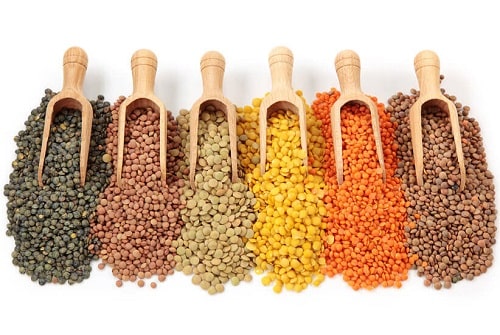
Today, lentils are the most produced in Canada. However, in Asia and North Africa are the two regions that use lentils most commonly in their dishes.
>> Are melon seeds high in calories? Tips to eat melon seeds without getting hot or sore throat
2. How many types of lentils are there?
Based on the color of the seeds, lentils are divided into several types. Currently, on the market, there are the following types of lentils used mainly:
– Red lentils:
This type of bean is also known by another name, brown lentil. This is also the type of lentils that are bought and used the most.
Red lentils appear in many nutritious dishes. Light scent very easy to use. After processing, the beans retain their shape. Lentils are often used mainly in stews.
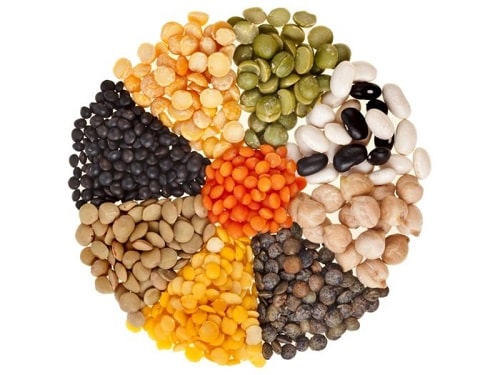
– Puy lentils:
The origin of Puy lentils originates from the Le Puy region of France. Beans are green but quite small in size, only about 1⁄3 of green lentils. When eating Puy lentils, there will be a pepper smell.
– Green lentils:
Unlike some other beans, green lentils are more varied in size. Not only that, the price of this bean is also cheaper, so it is often chosen to cook substitutes for Puy lentils.
– Yellow and red lentils:
Yellow and red lentils are also very popular and widely used because of their delicious taste. However, it is more suitable for making porridge or tea because it is easy to soften and crumble during cooking.
– Beluga lentils:
Beluga lentil seeds are quite small in size, looking very much like caviar. This bean is black in color and is commonly used in salads.
3. Nutritional composition of lentils
Depending on the type of lentil, the nutritional composition will be different. However, in general, in one cup of cooked lentils (198g) will include the following nutritional content:
Calories: 230 Calories
Carbohydrates: 39.9 grams
Protein: 17.9 grams
Fat: 0.8 grams
Fiber: 15.6 grams
Vitamin B1 groups: provide 22% of the daily intake (RDI)
Vitamin B3: 10% of the RDI
Vitamin B6: 18% of the RDI
Folate: 90% of the RDI
Pantothenic acid: 13% of the RDI
Iron: 37% of the RDI
Magnesium: 18% of the RDI
Phosphorus: 36% of the RDI
Potassium: 21% of the RDI
Zinc: 17% of the RDI
Bronze: 25% RDI
Manganese: 49% RDI
With the above information can be seen: protein content accounts for more than 25% of the composition of lentils. Therefore, this nut can be a nutritious dish to use as a meat substitute.
In addition, lentils are also a rich source of iron. This is a mineral that is often lacking in vegetarian diets.
Fiber also makes up a sizable portion of lentils. This enhances intestinal motility and creates an environment for beneficial bacteria in the digestive tract to grow.
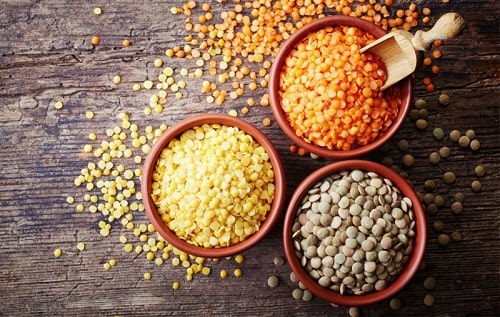
Adding lentils in the menu helps to increase the weight of the stool and support the bowel to work better.
In addition, lentils contain many healthful phytochemicals called phytochemicals. These substances have a great effect in protecting the body, preventing the risk of chronic diseases such as cardiovascular disease and type 2 diabetes.
4. What are the uses of lentils?
4.1. Polyphenols in lentils are a source of essential nutrients
Lentils are rich in polyphenols, which are plant compounds that have many positive health effects. One of them is procyanidins and flavonoids. These substances have strong antioxidant, anti-inflammatory and neuroprotective effects.
Scientific studies have proven that lentils have the ability to inhibit the body’s production of cyclooxygenase-2. This is an inflammatory substance. The polyphenols in lentil seeds can help prevent the growth of cancer cells, especially skin cancer cells.
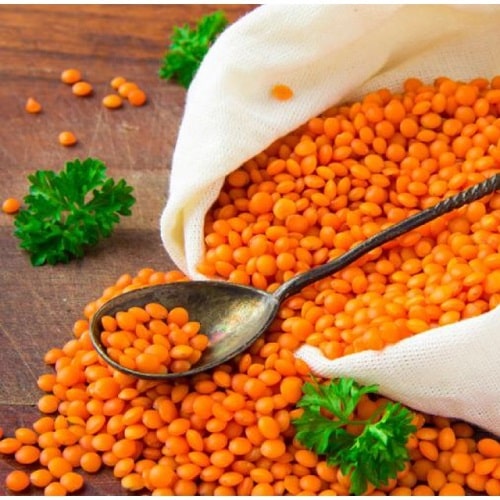
Another scientific animal study showed that polyphenols in lentils also helped improve blood sugar, but did not explain how it helped. It is not simply due to the carbohydrate, protein and fat content found in lentils.
The polyphenols in lentils are not reduced after processing. Therefore, more human studies are needed before definite conclusions can be drawn about the possible health benefits of polyphenols in lentils.
Cancer patients should add lentils to the menu to prevent the growth of cancer cells.
4.2. Lentils help protect heart health
According to an 8-week study in 48 overweight or obese people with type 2 diabetes, 60 grams of lentils per day increased levels of good HDL cholesterol, significantly reducing levels of bad LDL cholesterol and triglycerides. count.
Lentils also help lower blood pressure. The results of another rat experiment showed that rats fed lentils had a greater reduction in blood pressure than mice fed peas, chickpeas and chickpeas.
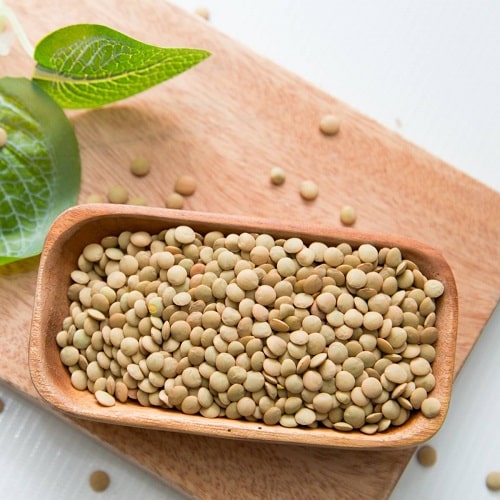
Not only that, the protein in lentils can inhibit the active substance angiotensin I-convert enzyme (ACE). This is a substance that activates blood vessel constriction that causes an increase in blood pressure.
Folate found in lentils is also a good nutrient that helps reduce homocysteine levels. This is a risk factor for cardiovascular disease.
Dishes with added lentils are fuller for longer, reducing overall food consumption. Thereby helping to reduce the risk of overweight and obesity, helping to keep slim.
Lentils also help regulate blood sugar at a stable level, reducing the risk of obesity.
Adding lentils to your diet helps prevent cardiovascular diseases
5. Lentils contain substances that interfere with nutrient absorption
All types of lentils contain antinutrients that can affect the absorption of other nutrients.
Lentils contain trypsin inhibitors. This active ingredient affects the production of enzymes that consume protein from food. However, the content of this substance is only at a low level, does not have much impact on protein digestion.
Lectins bind nutrients, preventing their absorption. It also has the ability to bind carbohydrates on the intestinal wall. If you use too much lentils, it can cause intestinal barrier disorders, increase intestinal permeability, cause leaky gut syndrome.
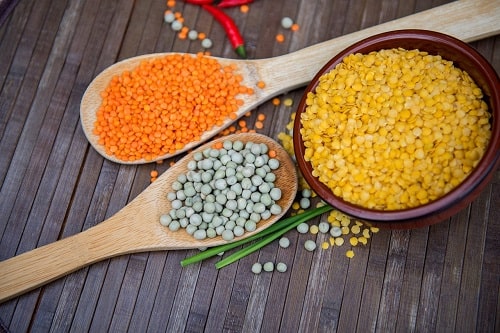
Bổ sung quá nhiều lectins trong chế độ ăn uống có thể làm tăng nguy cơ mắc bệnh tự miễn. Tuy nhiên các kết quả nghiên cứu còn hạn chế.
Đậu lăng có chứa tanin có thể liên kết với protein làm ngăn chặn việc hấp thụ một số chất dinh dưỡng. Có những ý kiến về việc tannin làm giảm hấp thu sắt. Tuy nhiên một số nghiên cứu đã chỉ ra rằng hàm lượng sắt nói chung không bị ảnh hưởng bởi lượng tanin có trong khẩu phần ăn. Bên cạnh những tác dụng tiêu cực, tannin cũng có nhiều lợi ích trong việc ngăn ngừa oxy hóa, giúp tăng cường sức khỏe.
Axit phytic (phytase) có tác dụng liên kết các khoáng chất như sắt, kẽm và canxi, làm giảm khả năng hấp thụ các chất vào cơ thể. Tuy vậy, nó cũng có khả năng chống oxy hóa và chống ung thư mạnh.
6. The best way to cook lentils
Lentils do not need to be soaked in water, you just need to wash the beans with clean water before processing to remove impurities. Next, put the beans in a pot of water, add a little salt, boil until boiling, then reduce the heat to low, cook for 15-20 minutes.
After boiling, remove the beans to drain and rinse with cold water. Cooking time is reduced to 5 minutes if you use split lentils. It is suitable for preparing a quick dinner, when the dishes are already on the table.
Lentils can be stored in the refrigerator for up to 5 days. So you can use them to prepare dishes for the whole week, lunches and dinners. The content of antinutrients is significantly reduced with cooking. To further reduce the antinutrients, you can choose to soak your lentils overnight before cooking.
Lentils are nuts rich in nutrients. You can add this bean to your daily diet. And balance the diet so that it is reasonable.
Lentil dishes are also very diverse. Depending on your preference, you can use lentils to cook porridge, cook tea, cook soup and add stews.
>> Top 20 most delicious types of rice on the market today
7. Where to buy lentils?
Although lentils have so much nutritional value. However, if you can’t buy clean, quality beans, it will be counterproductive.
Currently, in order to obtain high yields, many people use growth and stimulant drugs during the growing process. Besides, to keep the beans for a long time, some preservatives and colorings can be added. This has a huge impact on the health of the user.
To buy quality lentils, you should go to reputable supermarkets and stores. One of the best lentil trading units today is Dung Ha Agricultural Products. This is an address that has experience in trading clean agricultural products for many years. Besides lentils, Dung Ha Agricultural Products provides many other foods such as nutritious seeds, clean vegetables, imported fruits, seeds, …
You can contact to order via hotline 1900986865.
>> The uses of bay leaves may surprise you
With the above information, you should be able to answer the question “What are lentils?”. Hopefully, through this article, you will have a suitable way to use lentils, bringing health benefits to you and your family!








 Tiếng Việt
Tiếng Việt